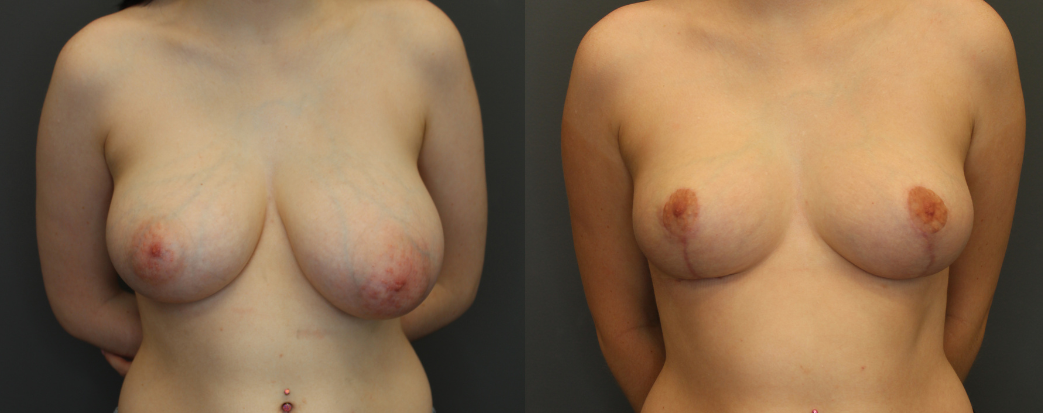WILL MY BREAST RECONSTRUCTION BE COVERED BY MY MEDICAL INSURANCE?
WILL MY BREAST RECONSTRUCTION BE COVERED BY MY MEDICAL INSURANCE?
4 Minute Read:
Dr. Goldberg is often asked by her patients whether their breast reconstruction will be covered by medical insurance. The resounding answer is yes.
This is according to The Women’s Health and Cancer Rights Act (WHCRA) which was enacted into law on October 21, 1998. The WHCRA helps protect many women with breast cancer who choose to have their breasts rebuilt (reconstructed) after a mastectomy. Mastectomy is surgery to remove all or part of the breast. This federal law requires most group insurance plans that cover mastectomies to also cover breast reconstruction. The United States Departments of Labor and Health and Human Services oversee this law.
Most importantly, there are additional protections under the Affordable Care Act (ACA). For plan years (a plan year can be any 12-month period that the insurer chooses) beginning on or after January 1, 2014, a group health plan generally cannot limit or deny benefits relating to a pre-existing condition.
The WHCRA applies to group health plans, health insurance companies, and HMOs, as long as the plan covers medical and surgical costs for mastectomy. Therefore, most major commercial insurances are required to cover breast reconstruction after mastectomy.
WILL MY MEDICAL INSURANCE BE ABLE TO TAKE PEOPLE OFF THEIR PLANS SO THAT THEY DON’T HAVE TO PAY BREAST RECONSTRUCTION BENEFITS?
No. The WHCRA does not allow insurance plans and insurance companies to kick people out of the plan or keep them from enrolling or renewing their coverage under the plan to avoid WHCRA requirements.Do insurance plans give doctors incentives to discourage women from having breast reconstruction after mastectomy?
No. The WHCRA does not allow insurance plans and insurance issuers to penalize doctors or lead them to provide care in a way that does not support the WHCRA. Nor does it allow insurance plans to reward doctors who do not encourage their patients to look into breast reconstruction. In fact, the WHCRA requires your medical plans to inform you that breast reconstruction is covered after mastectomy. Furthermore, many states require medical practitioner to inform patients that breast reconstruction is covered as part of breast cancer treatment.
I HAVE BEEN DIAGNOSED WITH BREAST CANCER AND PLAN TO HAVE A MASTECTOMY. WHAT KIND OF BENEFITS CAN I EXPECT FROM MY INSURANCE UNDER THE WHCRA ACT/LAW?
Under the WHCRA, group health plans, insurance companies, and HMOs that offer mastectomy coverage must also provide coverage for reconstructive surgery after mastectomy. This coverage includes reconstruction of the breast removed by mastectomy, reconstruction of the other breast to give a more balanced look, breast reconstruction revision if the reconstruction results in complications or unsatisfactory results, and treatment of physical complications at all stages of the mastectomy, including lymphedema.
This federal law sets a minimum requirement so that women can have breast reconstruction after mastectomy, even if they live in states that do not make insurance companies provide this coverage.
I HAVE BEEN DIAGNOSED WITH BREAST CANCER AND PLAN TO HAVE A MASTECTOMY. HOW WILL THE WHCRA AFFECT MY BENEFITS?
Since the enactment of the affordable care act in 2016, a woman cannot be denied her health insurance coverage due to preexisting conditions, such as a diagnosis of breast cancer. Together with the WHCRA, a woman is afforded the benefit of breast cancer reconstruction and its revision for the duration of her medical condition.
HOW DO I GET MY INSURANCE TO COVER MY BREAST RECONSTRUCTION OR BREAST RECONSTRUCTION REVISION?
First you will get an initial consultation with a plastic surgeon who specializes in breast reconstruction or with Dr. Goldberg. If you are deemed a candidate for breast reconstruction, the physician or Dr. Goldberg will submit a request for authorization of coverage for the procedure. We will also submit the necessary documentations showing the physical deformity and pain exhibited by the patient’s condition. This process may take anywhere from 4-6 weeks. Once it is approved, Dr. Goldberg’s staff will let you know what are your deductible or out of pocket expenses for the whole process. The insurance will cover your hospital stay and the procedure required for the breast reconstruction or breast reconstruction revision. Every patient should expect transparency and are clear of what is your out of pocket expense will be.
ARE HEALTH PLANS REQUIRED TO TELL ME ABOUT WHCRA BENEFITS?
Yes. Both health plans and health insurance issuers are required to tell you about WHCRA benefits. They must do this when you enroll and every year after that. The annual notice may be sent by itself or it may be included in almost any written communication by the plan or insurer, such as newsletters, annual reports, policy renewal letters, enrollment notices, and others. Enrollment notices may even be a phone number or web address from which to get more information about coverage.









